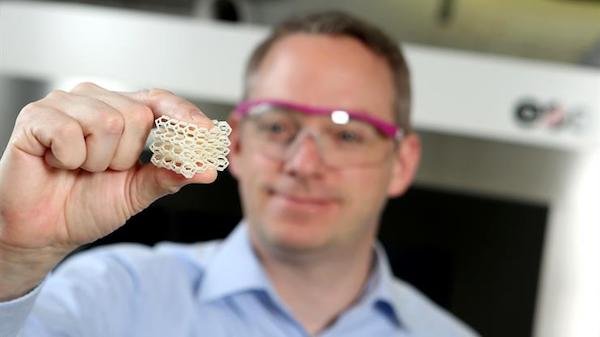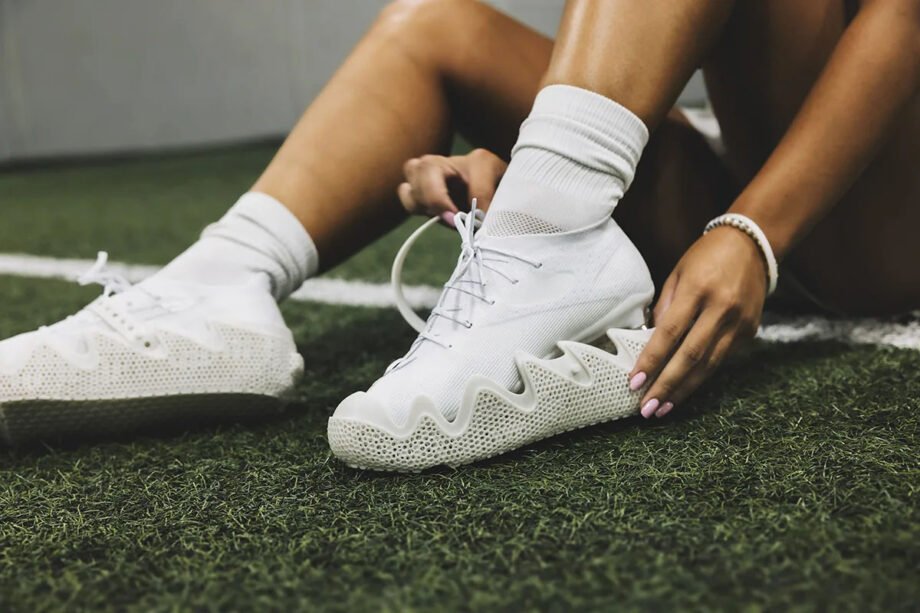For decades, athletes have accepted an inconvenient truth: once the whistle blows and the cleats come off the field, they become useless. Walking indoors means scuffed floors, awkward tiptoeing, or lugging around an extra pair of shoes. It’s a small hassle—but one that affects athletes across every sport that uses studs or spikes.
Former track athlete Jes Christian set out to solve that problem. Her company, Hypsole, developed the world’s first 3D-printed removable cleat guard—a slip-on outsole that instantly converts cleats into street-ready shoes. Using Carbon’s Digital Light Synthesis (DLS) technology, the Hypsole Cleat Guard combines smart design, sustainability, and digital manufacturing to transform a common athlete frustration into a revolutionary footwear innovation.
From Athlete Frustration to Footwear Innovation
The idea behind Hypsole began not in a lab, but on the track. As a college athlete, Jes Christian experienced firsthand the inconvenience of switching shoes between the field and everyday environments. Her vision was simple yet powerful: create a removable sole that protects cleats and floors alike—without compromising comfort or style.
That vision became the Tidal 3D™ Elite, later rebranded as the Hypsole Cleat Guard™. More than just a cover, it’s a fully functional outsole that slips over cleats to protect floors and provide traction on smooth surfaces. Athletes can step directly from turf to classroom, gym, or car—no shoe change needed.
The Hypsole Cleat Guard quickly gained attention from both the sports and 3D printing communities, representing a glimpse into how digital manufacturing can merge athletic performance, practicality, and lifestyle design.
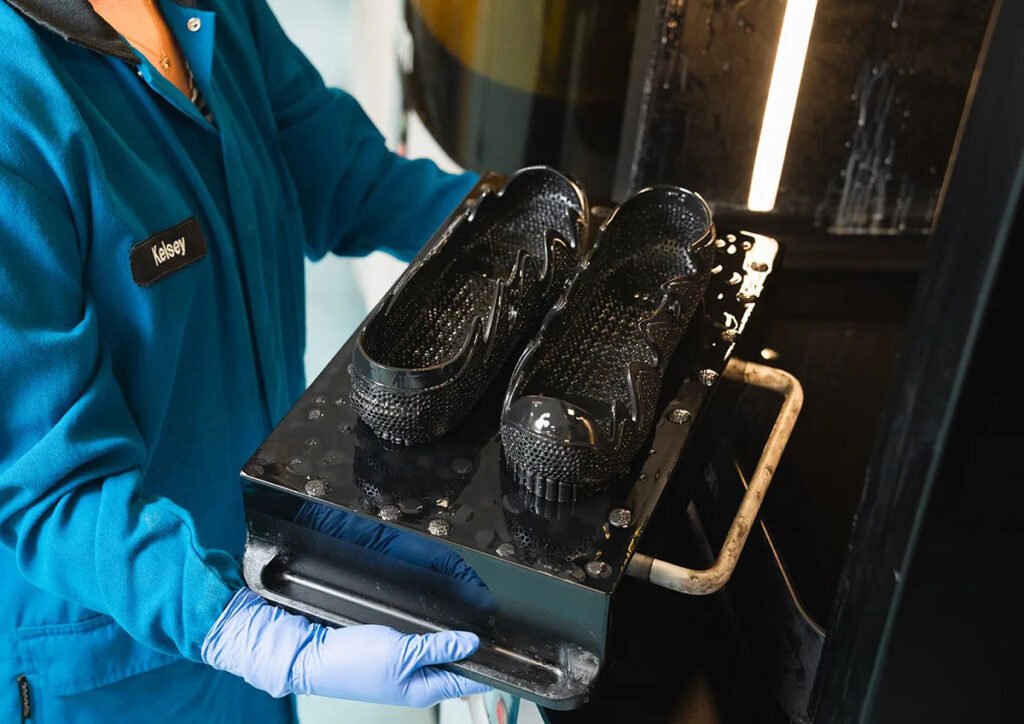
Engineering Excellence: Design Meets Functionality
At the core of Hypsole’s success is its balance of form, fit, and function.
Each guard features a 3D-printed lattice structure that mimics the cushioning and energy return of foam soles while remaining lightweight and breathable. The lattice distributes pressure evenly, offering both flexibility and stability—critical for comfort off the field.
Made from Carbon’s high-performance elastomeric polyurethane (EPU), the material delivers tear resistance, rebound energy, and long-term durability, ensuring the product holds up under repeated wear.
Additional functional details include:
- Adjustable elastic strap with snap-button closure to fit various cleat models
- Heel notch for quick on-off transitions
- Streamlined silhouette that integrates seamlessly with the cleat’s design
Visually, Hypsole’s design is just as compelling. Available in multiple colors and sleek finishes, the guards resemble modern streetwear footwear—turning what could have been a clunky protector into a fashion-forward accessory.
“If it doesn’t look good, players won’t use it.” — Jes Christian
As 3Dnatives noted, the Hypsole guard “blends seamlessly into the overall look of the sports shoe,” transforming practicality into an extension of athletic identity.
Faster to Market with Carbon’s Digital Light Synthesis (DLS)
Behind Hypsole’s rapid path to production lies Carbon’s Digital Light Synthesis, an additive manufacturing process that replaces traditional molding with light and oxygen.
Unlike injection molding, which demands costly steel tools and lengthy setup, DLS projects continuous UV light through an oxygen-permeable window to cure liquid resin into solid, isotropic parts—offering smooth surfaces and uniform strength in all directions.
For Hypsole, DLS was a game-changer. Working with Carbon’s engineers, the team refined multiple prototypes in under a year—each iteration tested, adjusted, and reprinted in days instead of months.
Key Manufacturing Advantages
| Feature | Carbon DLS 3D Printing | Injection Molding |
|---|---|---|
| Design Flexibility | Supports complex lattice geometries | Limited by mold tooling |
| Lead Time | Days | Weeks–Months |
| Customization | Digital, per-model | Requires new molds |
| Waste | Minimal | High (sprues, rejects) |
| Surface Quality | Smooth, isotropic | Requires post-finishing |
This agility empowers Hypsole to compete with major footwear brands—adapting new cleat models quickly, launching limited editions, and scaling production on demand without the overhead of traditional manufacturing.
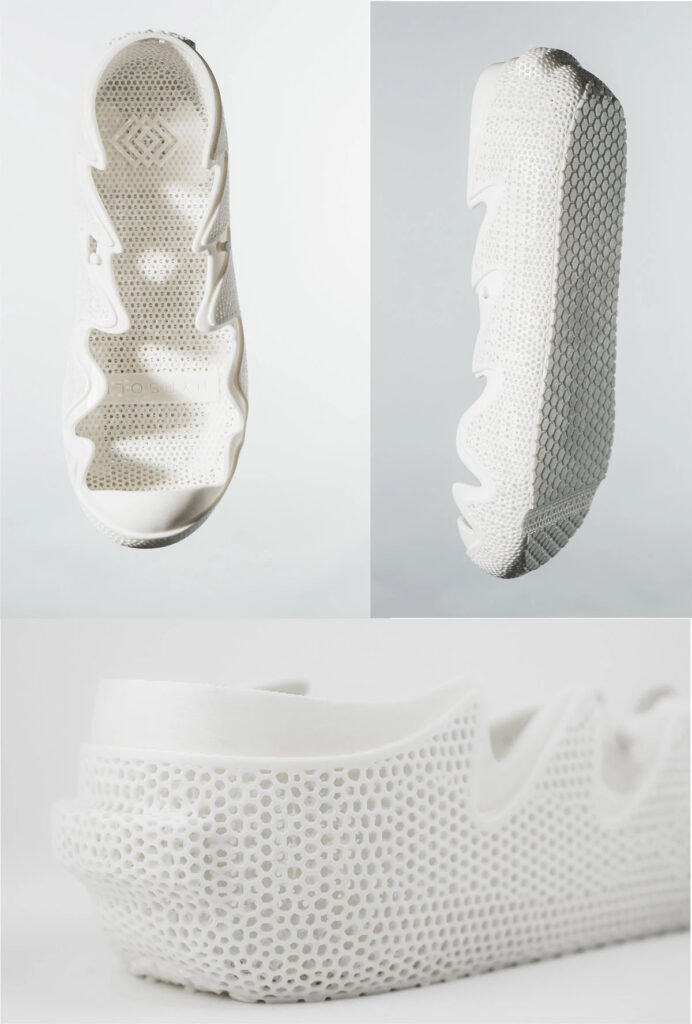
Sustainable Innovation with Bio-Based Materials
Hypsole’s partnership with Carbon also advances sustainable footwear manufacturing.
Each Cleat Guard is printed with Carbon’s EPU resin, which is 40% bio-based. Despite being derived from renewable feedstocks, it matches the performance characteristics of conventional thermoplastic polyurethane (TPU).
Combined with its efficient lattice geometry, the material minimizes waste and reduces environmental impact compared to solid rubber alternatives.
Sustainability Highlights
- Reduced waste: Only the required amount of resin is printed—no excess molds or sprues.
- On-demand production: Guards are printed as needed, avoiding overproduction.
- Material reuse: Unused resin can be reclaimed and re-cured for future prints.
This approach reflects a broader eco-conscious movement in sportswear, where performance gear meets environmental responsibility.
Athlete Benefits: Performance, Protection, and Style
For athletes, the Hypsole Cleat Guard is not just a product—it’s a lifestyle upgrade.
- All-terrain versatility: Instantly convert cleats into sneakers for walking indoors or on hard surfaces.
- Protective comfort: The EPU lattice cushions spikes, protecting both floors and joints from impact.
- Custom fit: The adjustable strap ensures a snug, secure fit on any cleat model.
- Style-driven design: Sleek aesthetics make the product wearable beyond the field.
It’s this blend of comfort, protection, and fashion that has positioned Hypsole as both a performance brand and a trendsetter in 3D-printed sportswear.
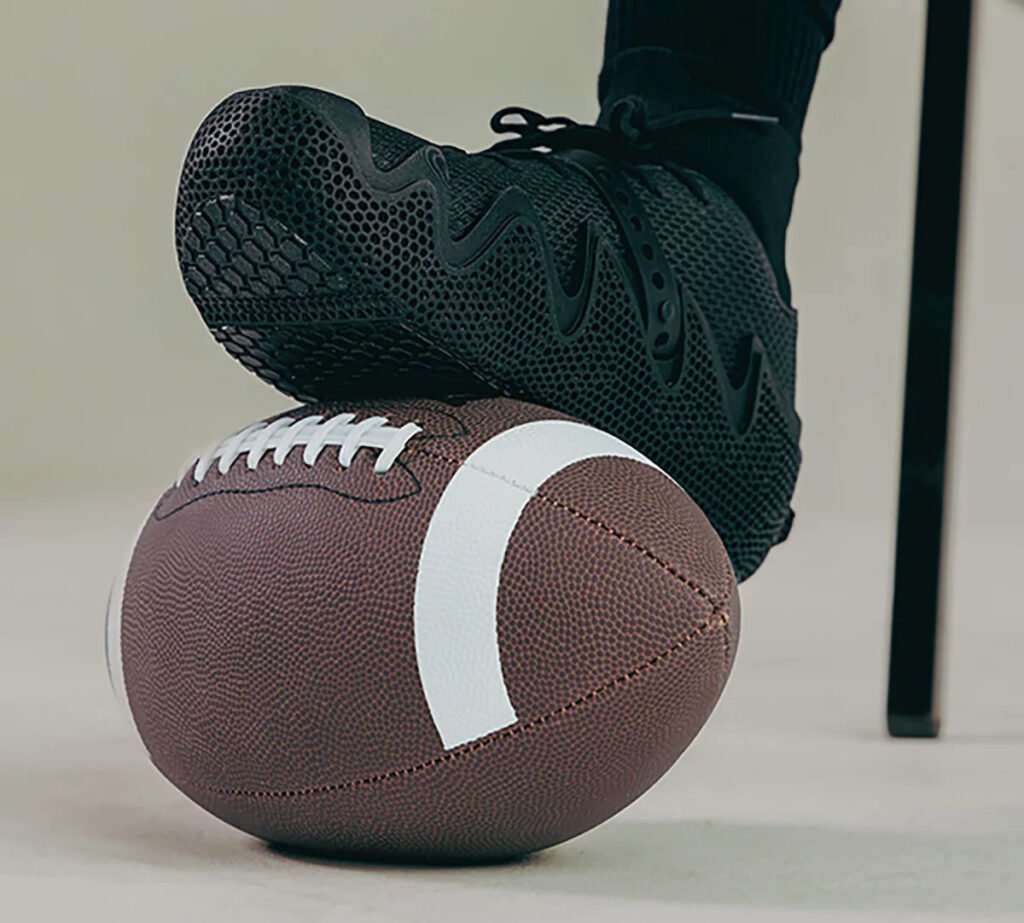
Outperforming Traditional Cleat Guards
Most traditional cleat covers are rigid plastic shells—bulky, unattractive, and uncomfortable. They protect surfaces but fail in aesthetics and usability.
Hypsole redefines the category through digital design freedom and additive materials:
- Lightweight, breathable lattice reduces bulk
- Sleek silhouette complements the cleat’s natural look
- Soft flexibility allows a natural walking motion
This innovation mirrors what Carbon and Adidas achieved with Futurecraft 4D midsoles, or what New Balance and Riddell did with customized insoles and helmet liners.
But Hypsole extends that innovation further—applying 3D printing to an entirely new product category: accessories that enhance the usability of footwear beyond performance.
As Fabbaloo observed, “3D print technology is the correct way to produce cleat guards, as conventional approaches cannot match the weight advantages and variety.”
The Future of 3D Printing in Sports Footwear
Hypsole’s achievement symbolizes a larger shift across the footwear industry: the digital transformation of product development.
3D printing platforms like Carbon DLS enable brands to:
- Launch new products without tooling investment
- Offer custom-fit accessories for specific cleat models
- Manufacture locally and on demand to reduce waste and shipping emissions
Carbon co-founder Phil DeSimone summarized this evolution succinctly:
“Digital manufacturing pushes the boundaries of what’s possible in every industry.”
For footwear innovators, it means faster iteration, greater sustainability, and new creative freedom. For athletes, it means gear designed precisely for their needs—lighter, more adaptable, and visually refined.
Conclusion: Where Performance Meets Sustainability
The Hypsole Cleat Guard is more than a clever solution—it’s a glimpse into the future of sports footwear. By integrating Carbon’s DLS technology, bio-based materials, and athlete-centered design, Hypsole demonstrates how 3D printing can merge performance, sustainability, and lifestyle.
What began as a simple athlete’s frustration has become a blueprint for the next generation of footwear innovation. It’s proof that even small startups can challenge giants—leveraging digital manufacturing to deliver smarter, greener, and more human-centered design.
As 3D printing continues to reshape the sportswear industry, one thing is clear:
The next step in athletic innovation starts when the cleats come off.
Source:
- Carbon 3D: Hypsole Case Study — https://www.carbon3d.com/resources/case-study/hypsoles-cleat-guard-dream-gets-to-production-faster-with-carbon
- 3Dnatives — https://www.3dnatives.com/en/


